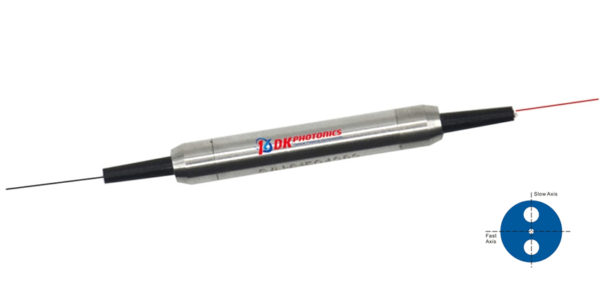Polarization is a crucial aspect of light, and there polarizers – key optical elements used to control polarization. They work to transmit a desired polarization state while reflecting, absorbing or deviating the rest. There are various polarizer designs, with each having their own advantages and disadvantages. Here we will look at some of the key factors that you should look in order to choose the perfect polarizer for you.

Factors to keep in mind when selecting a polarizer:
Extinction Ratio and Degree of Polarization: The polarizing properties of the best in-line linear polarizer to buy depend upon the degree of polarization or polarization efficiency and its extinction ratio.
So it is crucial to measure the extinction ratio typically which may vary with wavelength, incident angle along with other factors like cost, size, and polarized transmission for a given application.
Transmission: This refers to the transmission of light in-line polarized the polarization axis direction. This also may refer to the transmission of un-polarized light through the polarizer. For ideal transmission of such polarization is 100%, parallel transmission should be 50% and crossed transmission 0%.
Acceptance angle: This is the largest deviation from design incidence angle at which the polarizer can still perform well as required. Most polarizers can work at an incidence angle of 0° or 45°.
The acceptance angle is important for alignment, and this is more so when it comes to non-collimated beams. Keep this in mind and choose your in-line polarizer which meets your requirements.
Construction: There is a wide range of forms and designs available. For example, thin film polarizers are thin films similar to optical filters. There are thin flat polarizing plate beam splitters placed at an angle to the beam. And polarizing cube beam splitters have two right angle prisms which are mounted together at the hypotenuse. Get the details of polarizer structure to be sure you choose the right one for you.
Clear aperture: This feature often comes with birefringent polarizers. There are optically pure crystals that limit the size of these polarizers. Choose the size of clear aperture according to your needs. Dichroic polarizers come with largest clear aperture.
Optical path length: The length light which is crucial for dispersion, damage thresholds, and space constraints should travel through the polarizer. There is ideal optical path length in birefringent polarizers but likes of dichroic polarizers lack this.
Cost: This is most important factor to look at when it comes to in-line polarizers. The polarizers which come with large, very pure crystals are expensive while the ones made of stretched plastic are a bit more cost effective.
In addition, there are many other factors that may affect the cost, such as place you buy your polarizer from. If you are looking for quality in-line polarizers with features like low insertion loss, high power handling, high extension ratio at a competitive price in China, DKPhotonics is the right choice for you. It is a leading name providing a wider range of quality optical passive components to suit different needs.